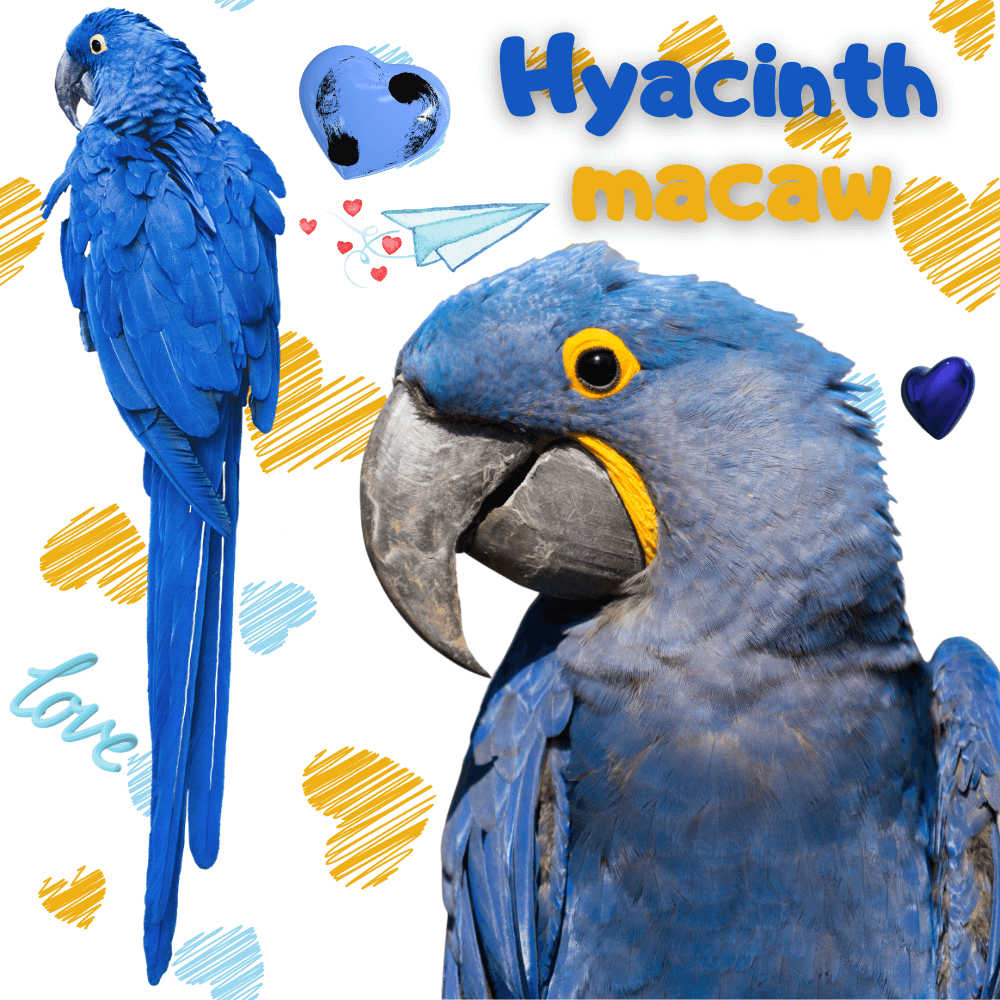Belonging to the parrot group, the hyacinth macaw also exhibits striking behaviors, such as imitating or repeating speech.
Many brightly colored parrots, such as the hyacinth macaw, can be spotted in South America. This valuable bird inhabits much of Brazil, Bolivia, and northern Paraguay. It is the largest species in the group of macaws.
Unfortunately, this species is now in a vulnerable state. Due to poachers, it is difficult to further research the behaviors and characteristics of this animal. So read on if you want to know more about this magnificent bird.
Hyacinth macaw personality
The hyacinth macaw ( Anodorhynchus hyacinthinus ) is a psittaciform bird belonging to the family Psittacidae. Within this group are the birds commonly known as parrots. This family includes macaws, parrots, and other similar birds, which live in America and Africa.
By comparing these birds, it is easy to conclude that they all share a number of common characteristics. The hyacinth macaw is distinguished from others by its magnificent colors and its behavior, among other things.
SOURCE: African Grey Parrot Pet
Hyacinth macaw size
Compared to the rest of its relatives, Anodorhynchus hyacinthinus is 90-100 centimeters long, and its wingspan extends up to 140 centimeters. This makes him the largest parrot currently known. In addition, its weight varies between 1.5 and 1.7 kilos, a significant figure for a bird.
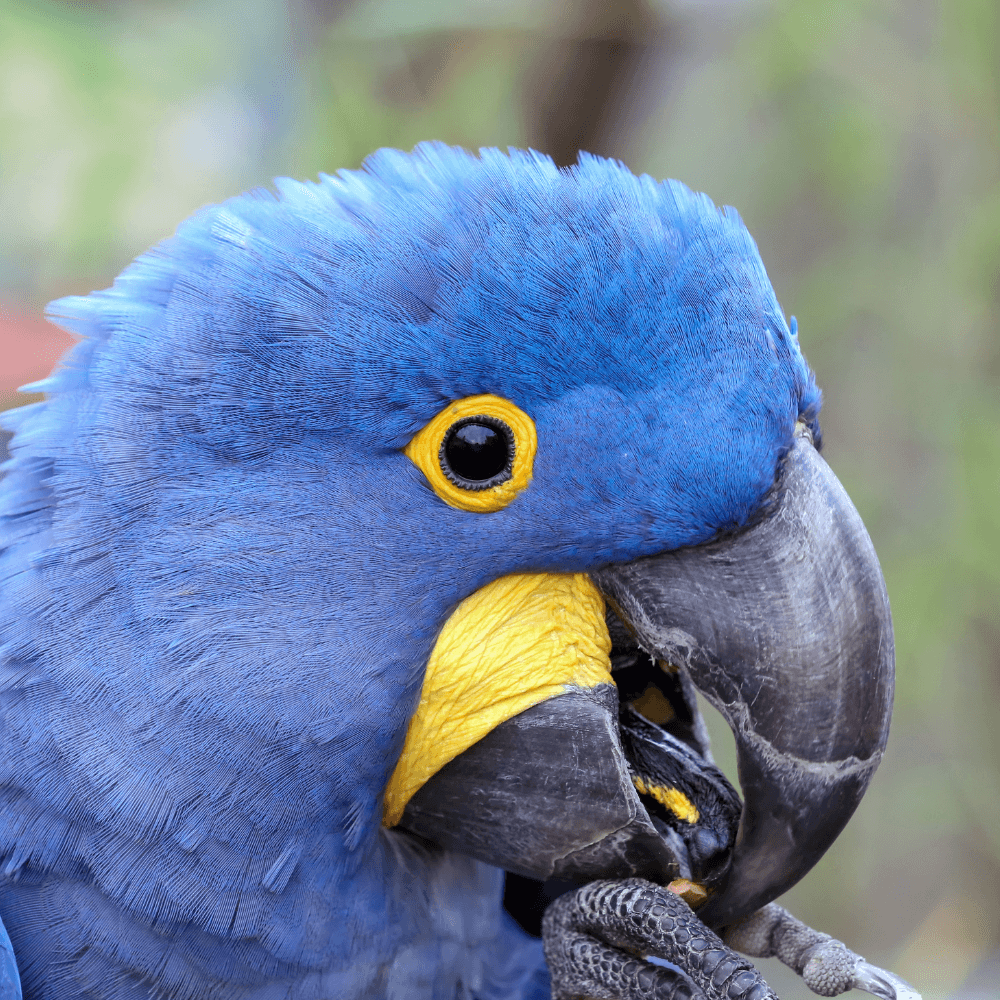
Hyacinth macaw color
The attractive coloration of this parrot makes it an irresistible visual target for tourists. Its powerful blue tone – reminiscent of indigo – adorns its wings and its very long tail, the lower part of which is black.
As for its periocular ring located at the base of the beak on the side, it is yellow in color. For all the above, this species is included in the group of the most colorful birds, together with the blue-headed lorikeet and still other representatives.
Hyacinth macaw beak
Charles Darwin determined that the beaks of birds perform an essential function: it is their key tool in feeding. In the case of the hyacinth macaw, its main food source is nuts. Thanks to the strength of its black beak, this bird can crack nuts and the rest of the foods that make up its diet.
Studies indicate that these birds can pick up nuts from the ground or tear them from the plant. In addition, they supplement their diet with fruits of the genus Ficus sp. (figs), as well as freshwater gastropod mollusks of the genus Pomacea.
Hyacinth macaw male or female
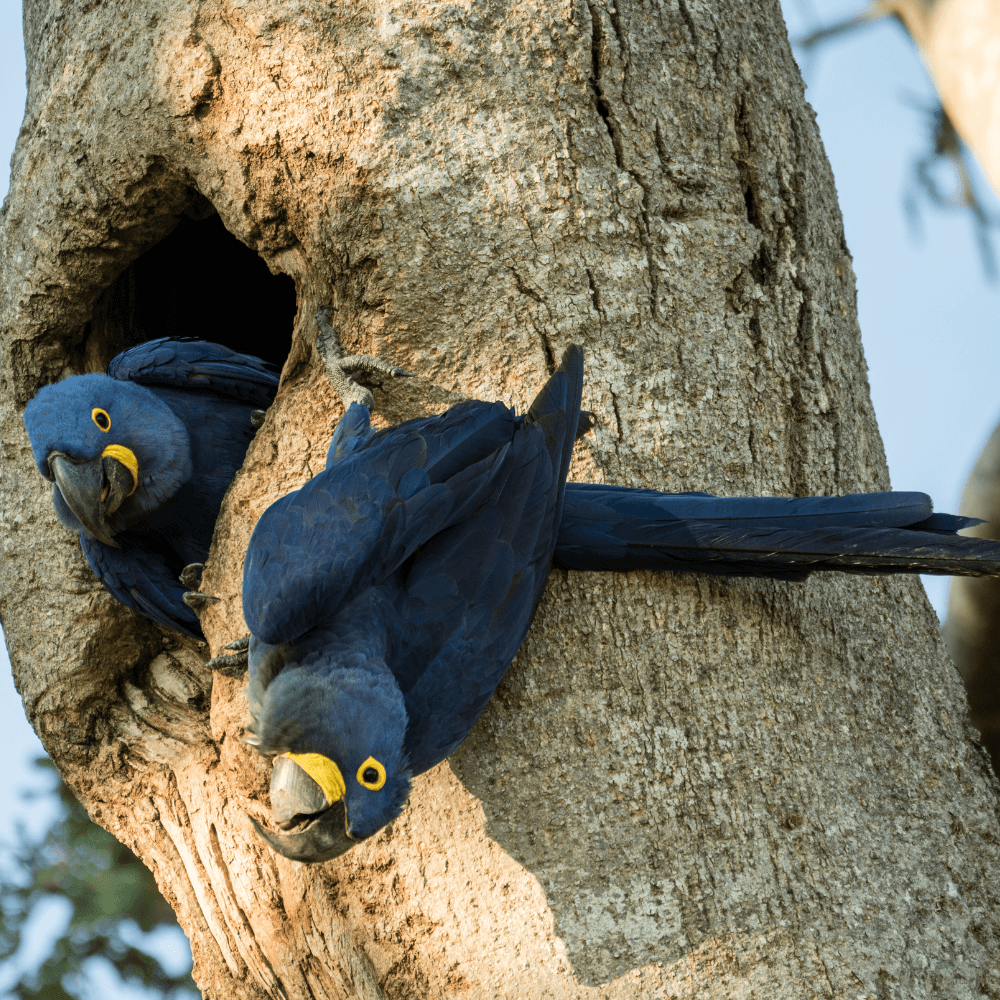
It is not possible to differentiate males from females with the naked eye. Therefore, it is stated that this species does not exhibit sexual dimorphism, at least mostly visible. Although it seems that they are almost indistinguishable, the females have the distinction of being more slender.
Hyacinth macaw Habitat
This species is also found in the interior of South America. But the different areas are very separated from each other.
It is normally found in tropical regions. Within these regions, those with seasonal humidity or low humidity are preferred. This bird can thus be found in the Brazilian Amazon rainforest and the rocky valleys of northeastern Brazil.
Hyacinth macaw behavior
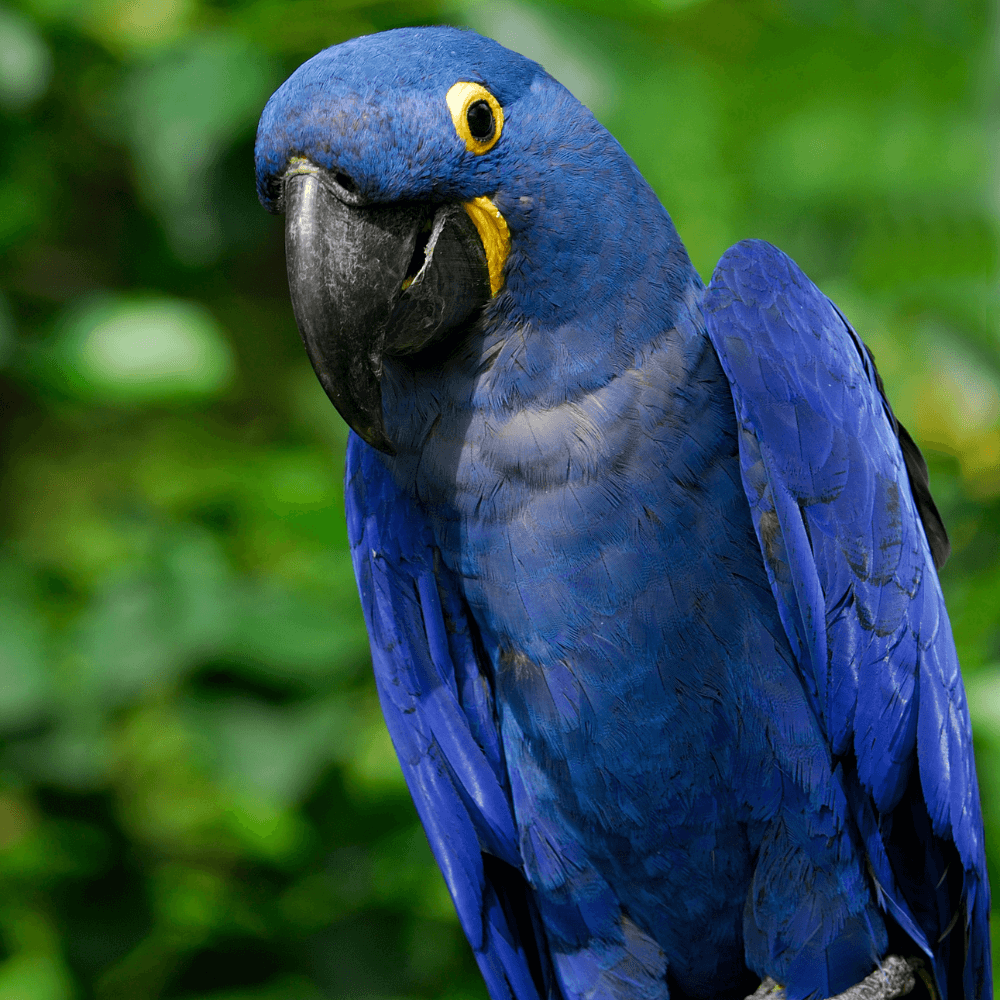
Parrots are distinguished by many cognitive abilities, but perhaps the best known is their ability to imitate sounds or words. However, the hyacinth macaw has other interesting characteristics. Here are a few :
- This bird performs migratory movements.
- It lives in different social structures: in pairs, in family groups, or in small herds of up to 10 individuals.
- Hyacinth macaws have favorite trees for nesting: especially the genera Enterolobium and Sterculia.
- The males “participate” in the incubation: throughout the month of incubation, the male is in charge of taking care of his companion.
- Females lay 2 eggs, but usually only one survives: the egg that hatches earlier has the greatest chance of survival, as the second hatchling cannot compete for food, being weaker.
- They imitate and repeat words from the age of 6 or 7 months: it is believed that after 2 years these birds are able to understand what they are saying.
Hyacinth macaw conservation status
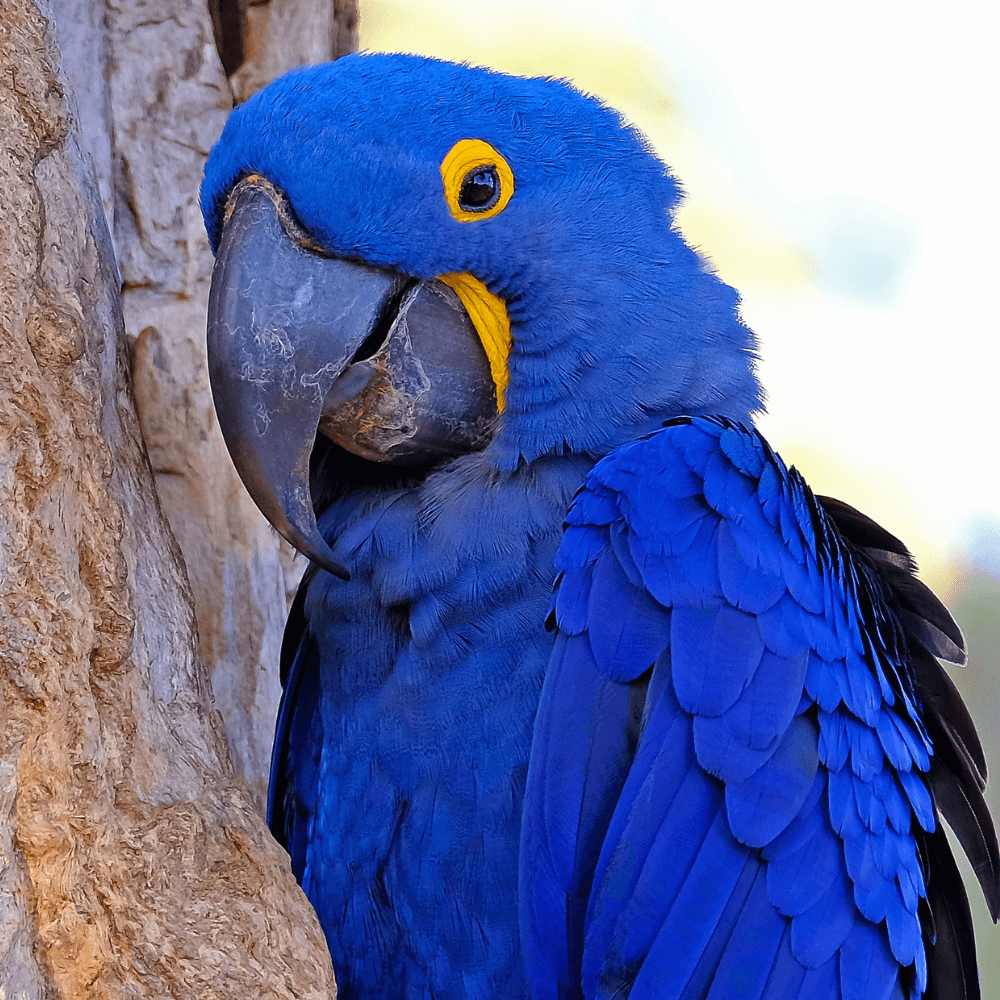
Currently, the hyacinth macaw is on the endangered vulnerable species list. This situation stems from the excess of catches for commercial purposes, as well as the use of their feathers to make accessories.
In addition, like the rest of the animals that make up the wildlife of the regions where they live, humans have endangered their habitat. Voluntary fires in order to obtain agricultural land are particularly significant. These fires eventually destroy the nests of this species and many others.
In short, the hyacinth macaw is a bird whose color is irresistible to humans. However, its current state of conservation is serious and threats need to be curbed in order to prevent the disappearance of a species as beautiful as this one.
In an effort to raise awareness, Bolivia has decided to include this species in its 100 bills. Government entities are thus seeking to promote the protection of this and other species among the population.

